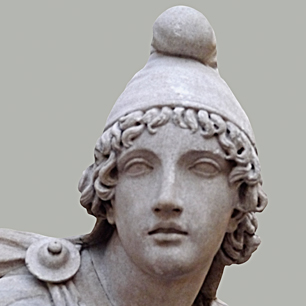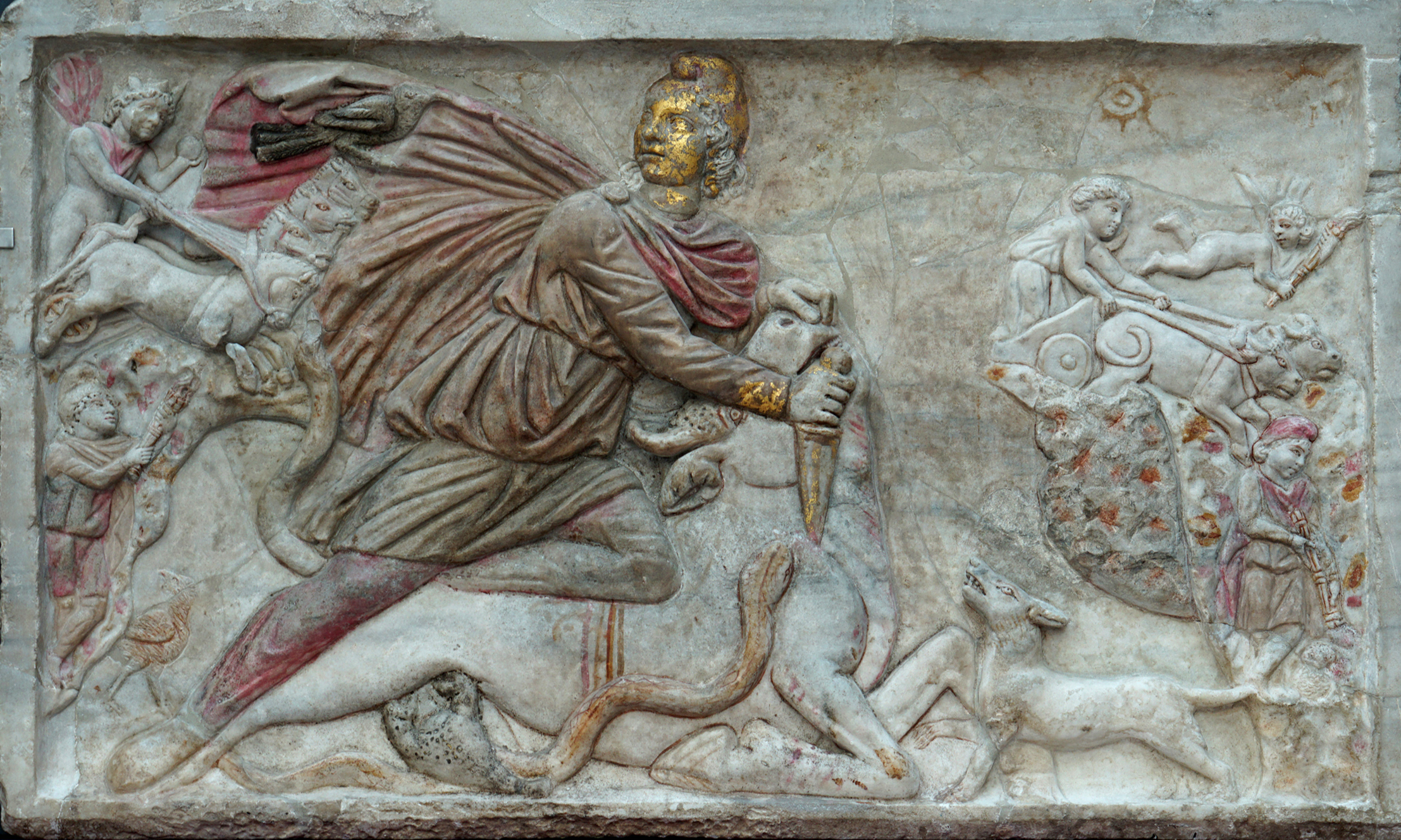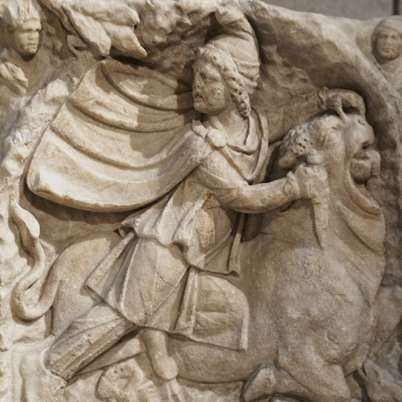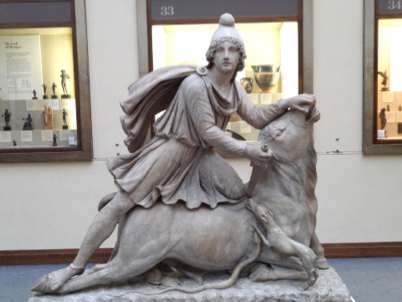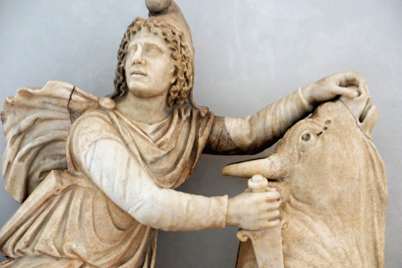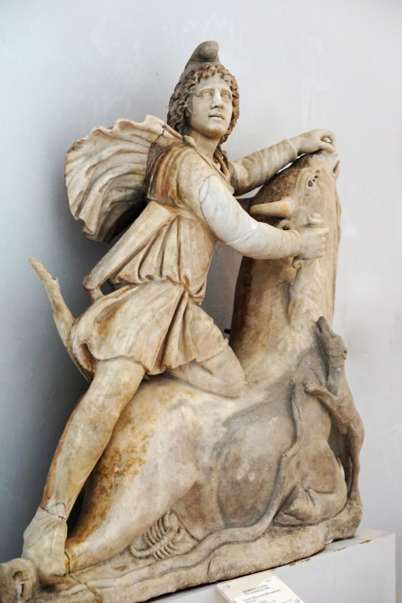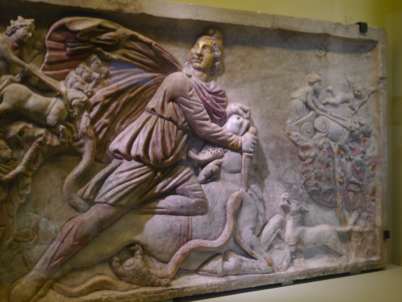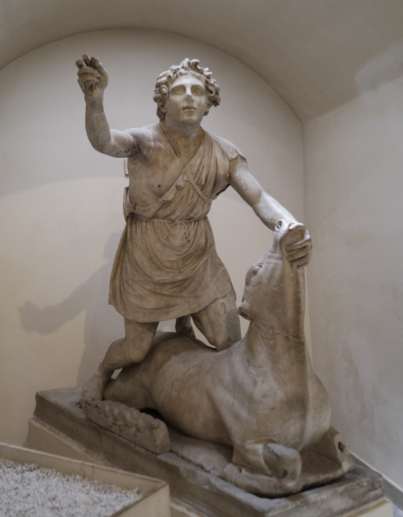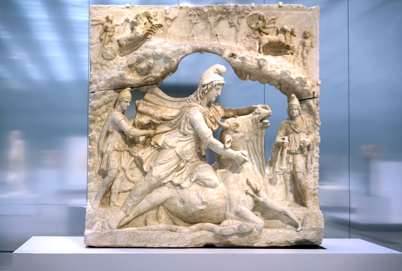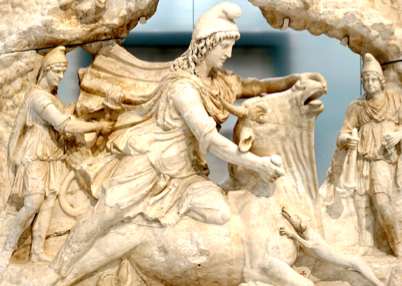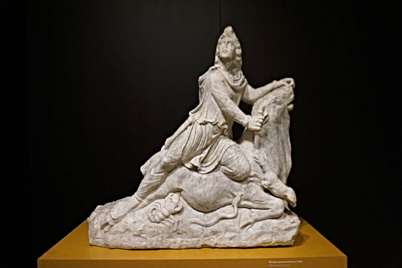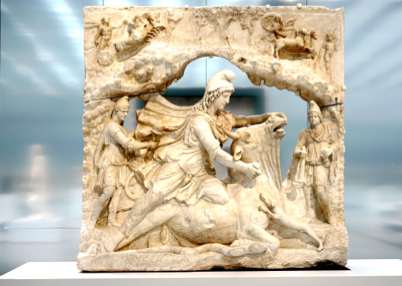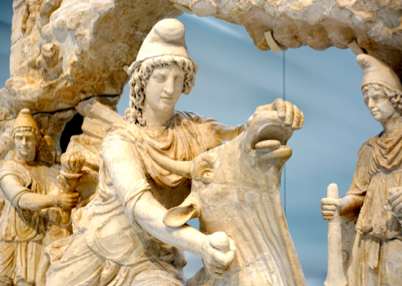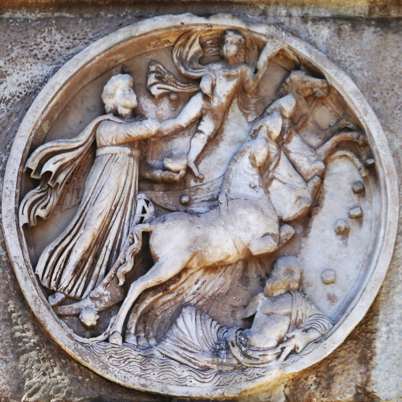The ROMAN CIVILIZATION
IMAGES OF THE ROMAN CIVILIZATION
Roman & greek mysteries
mithras
The unique underground temples or Mithraea appear suddenly in the archaeology in the last quarter of the 1st century AD..
Mithraism, also known as the Mithraic mysteries, was a mystery religion centered around the god Mithras that was practised in the Roman Empire from about the 1st to the 4th century CE. The religion was inspired by Persian worship of the god Mithra (proto-Indo-Iranian Mitra), though the Greek Mithras was linked to a new and distinctive imagery, The mysteries were popular in the Roman military.
Roman Mithraism throughout the Roman Empire
Roman Conquest of THE EMPIRE and Contact with eastern cults .. 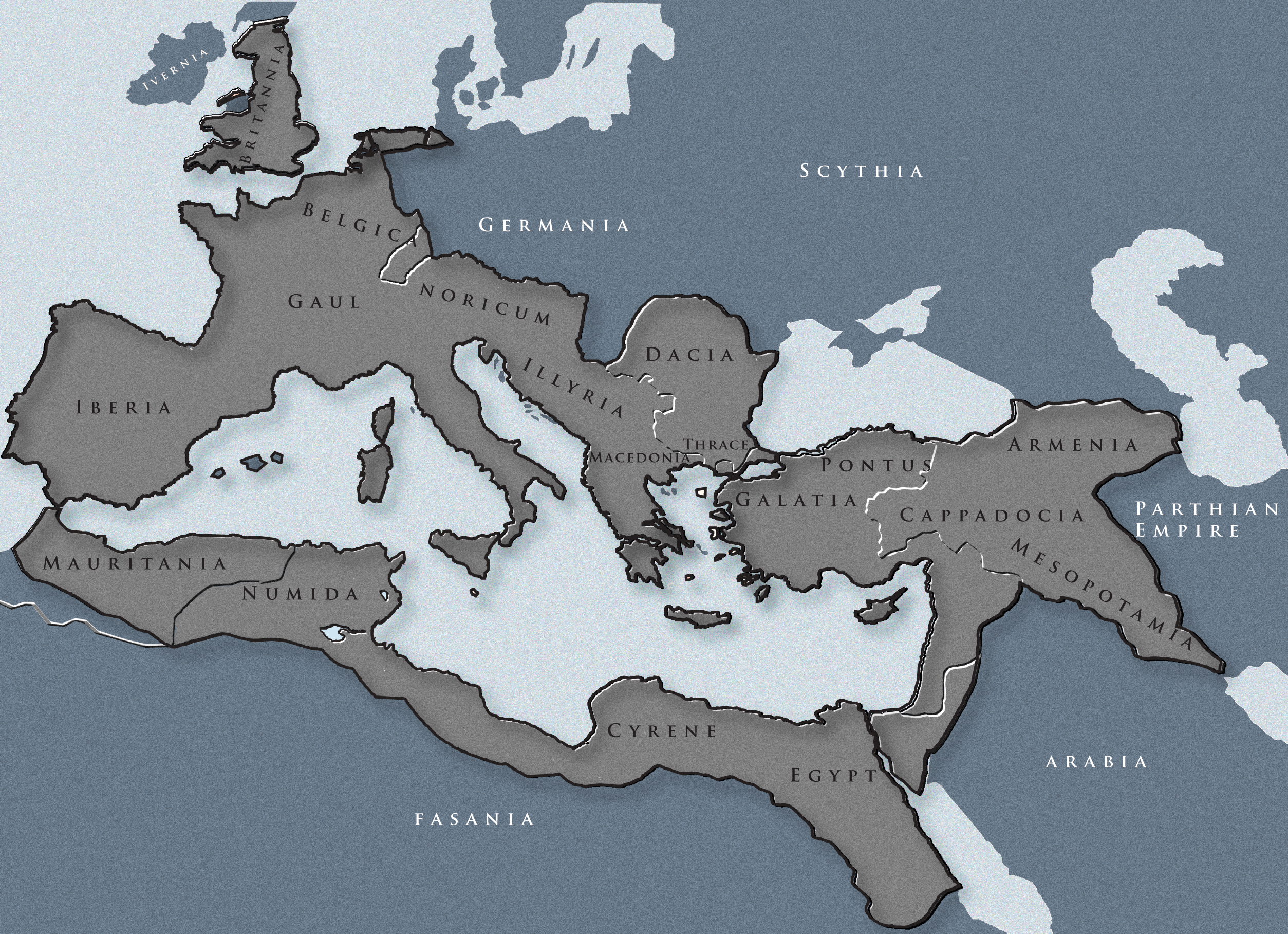
About 420 sites have yielded materials related to the cult. Among the items found are about 1000 inscriptions, 700 examples of the bull-killing scene (tauroctony), and about 400 other monuments..No written narratives or theology from the religion survive. Much about the cult of Mithras is only known from reliefs and sculptures. Mithras-worship in the Roman Empire was characterised by images of the god slaughtering a bull.
Roman imperial times In the 3rd and 4th centuries AD, the cult of Mithra, carried and supported by the soldiers of the Roman Empire, was the chief rival to the newly developing religion of Christianity. The Roman emperors Commodus and Julian were initiates of Mithraism, and in 307 Diocletian consecrated a temple on the Danube River to Mithra, “Protector of the Empire.”
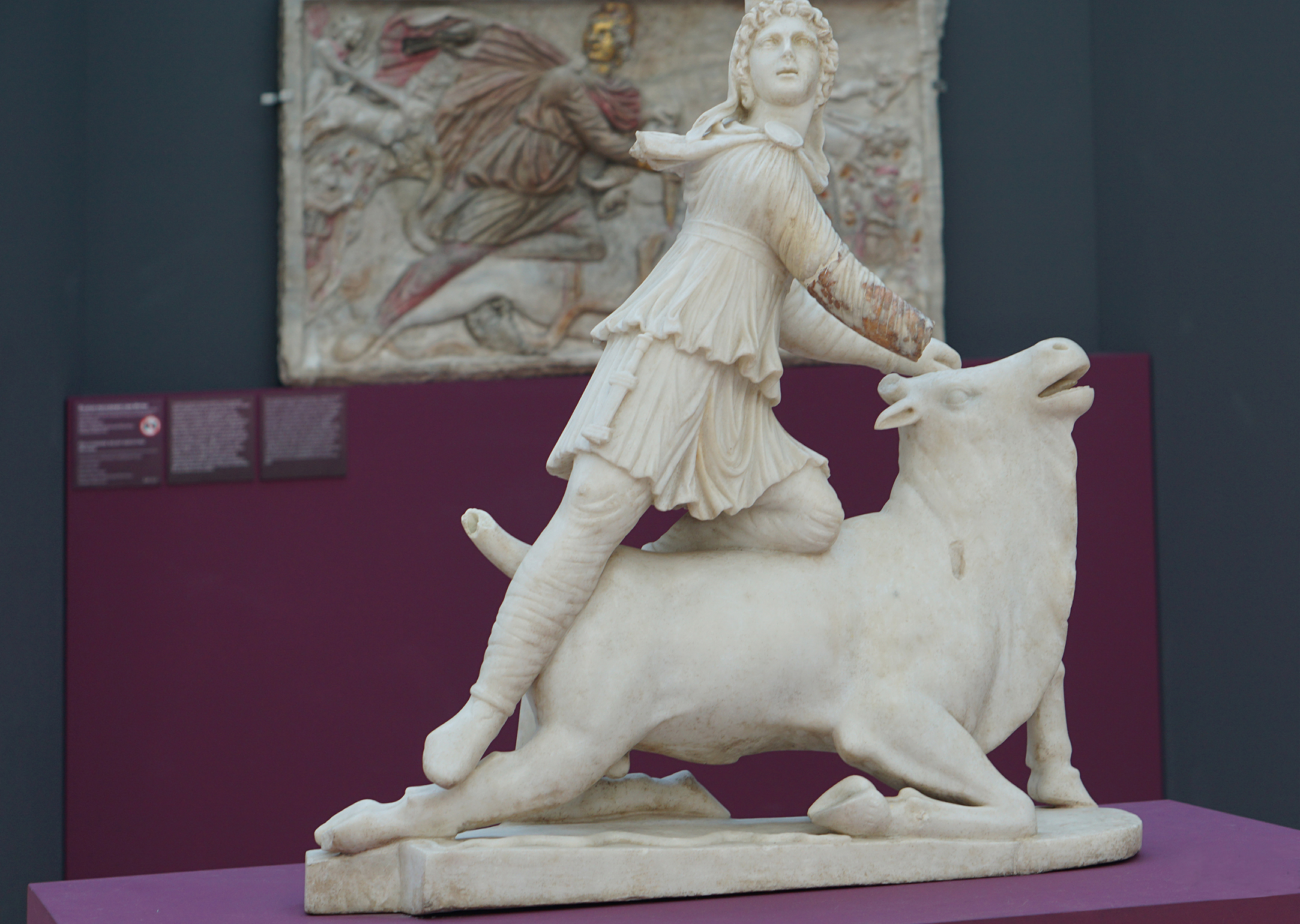
UNDERGROUND "TEMPLE" OF MITHRAS
In every Mithraeum the centrepiece was a representation of Mithras killing a sacred bull, The centre-piece is Mithras clothed in Anatolian costume and wearing a Phrygian cap; who is kneeling on the exhausted bull, holding it by the nostrils with his left hand, and stabbing it with his right. As he does so, he looks over his shoulder towards the figure of Sol. A dog and a snake reach up towards the blood. A scorpion seizes the bull's genitals. A raven is flying around or is sitting on the bull. Three ears of wheat are seen coming out from the bull's tail, sometimes from the wound. The bull was often white. The god is sitting on the bull in an unnatural way with his right leg constraining the bull's hoof and the left leg is bent and resting on the bull's back or flank.
The event takes place in a cavern, into which Mithras has carried the bull, after having hunted it, ridden it and overwhelmed its strength. Sometimes the cavern is surrounded by a circle, on which the twelve signs of the zodiac appear. Outside the cavern, top left, is Sol the sun, with his flaming crown, often driving a quadriga. A ray of light often reaches down to touch Mithras. At the top right is Luna, with her crescent moon, who may be depicted driving a biga.
.CLICK ON IMAGES FOR TO IN LARGE ⬇︎

sol invictus
Sol Invictus' religion and the Mithraic religion, very famous among Roman soldiers of the 1st century B.C. It celebrated a very similar thing that was celebrated during the Saturnalia festivals, the end of the darkest period of the year and birth of a new light period. Matching the winter solstice, Sol Invictus was a sign of rebirth
One of the most popular gods in Rome was "Deus Sol Invictus", and Romans worshiped him weekly during the "dies solis" (literal translation: Sun-Day). Constantine the Great, that was also a Sol Invictus high priest, ordered that this day should also be a holiday for the Christians.
The height of Syrian influence was in the 3rd century AD when Sol, the Syrian sun god, was on the verge of becoming the chief god of the Roman Empire. He was introduced into Rome by the emperor Elagabalus (Heliogabalus) in about AD 220, and by about AD 240 Pythian Games were instituted in many cities of the empire. The emperor Aurelian (270–275) elevated Sol to the highest rank among the gods. Sanctuaries of Sol and the gods of other planets (septizonium) were constructed.
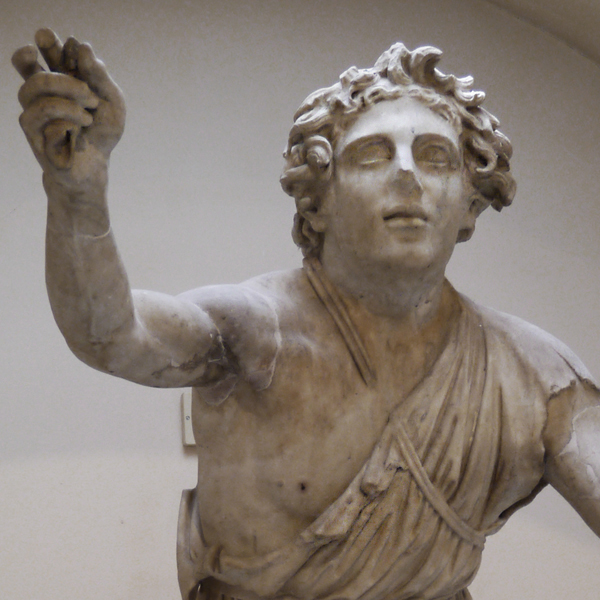
introduced into Rome by the emperor Elagabalus
The Roman Emperors Commodus and Julian were initiates of Mithraism
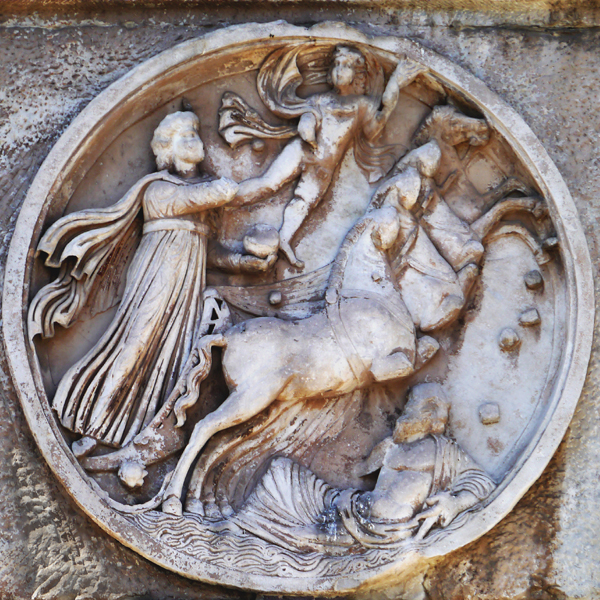
Sol Invictus
ascending to the heavens
Sol and sharing a meal of bull-parts with him, and ascending to the heavens in a chariot.
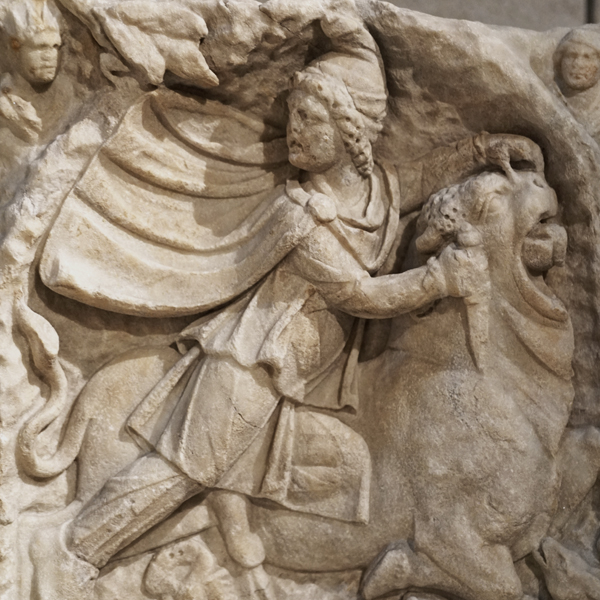
the Mithraeum underground centrepiece
The practice of depicting the god slaying a bull seems specific to Roman Mithraism.
THE LION HEADED FIGURE 3
The One of the most characteristic and poorly-understood features of the Mysteries is the naked lion-headed figure often found in Mithraic temples, lion-head
His body is a naked man’s, entwined by a serpent (or two serpents, like a caduceus), with the snake’s head often resting on the lion’s head. The lion’s mouth is often open, giving a horrifying impression. He is usually represented as having four wings carry the symbols of the four seasons, and a thunderbolt is engraved on his chest. At the base of the statue are the hammer and tongs of Vulcan and Mercury’s cock and wand (caduceus). A variation of the same figure, but with a human head instead of the lion-mask, is also found, but is rare
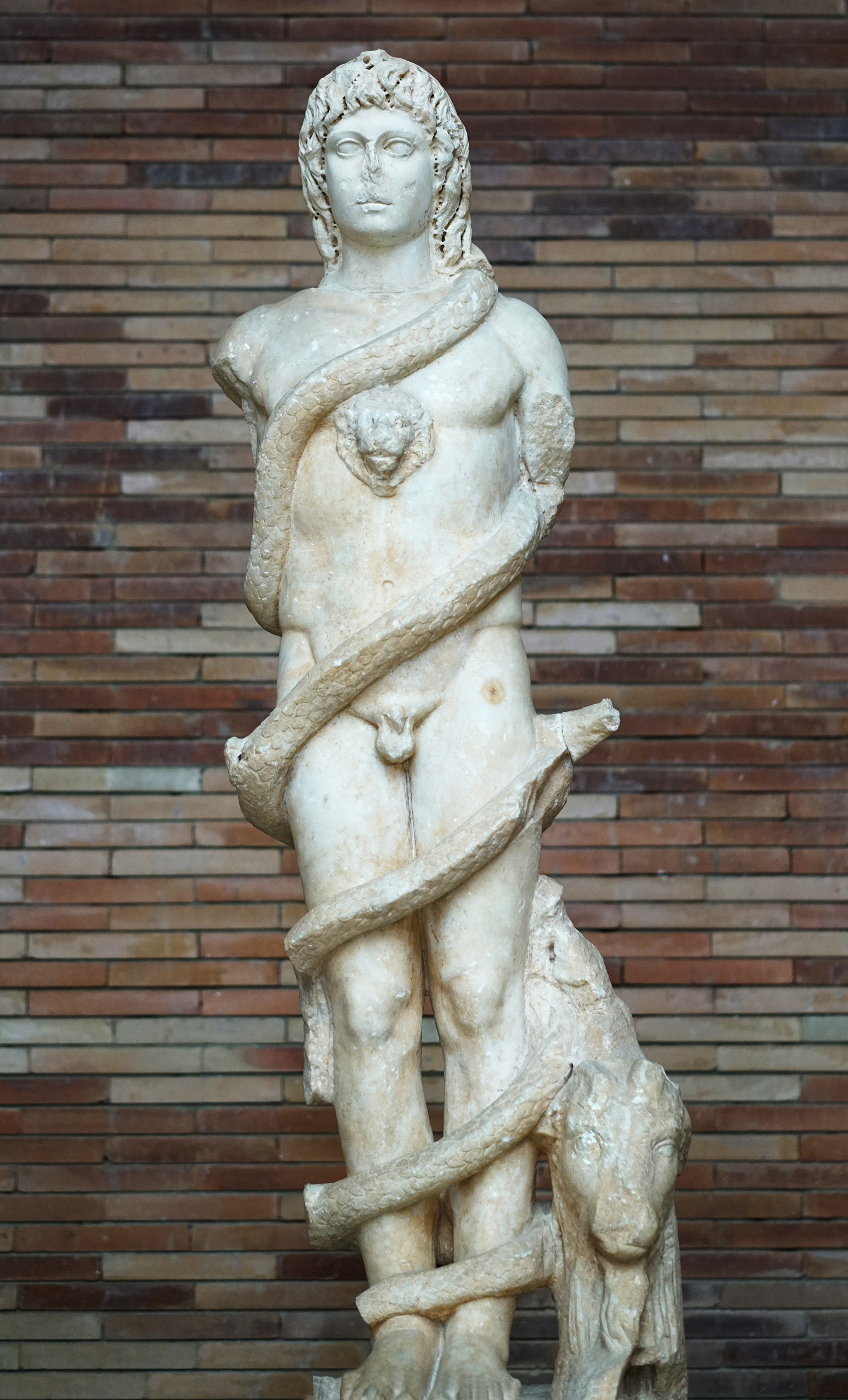
the end of roman mithraism
In fourth century the religion was as good as dead throughout the empire. Roman Mithraism came to an end with the anti-pagan decrees of the Christian emperor Theodosius during the last decade of the 4th century.
TOP
